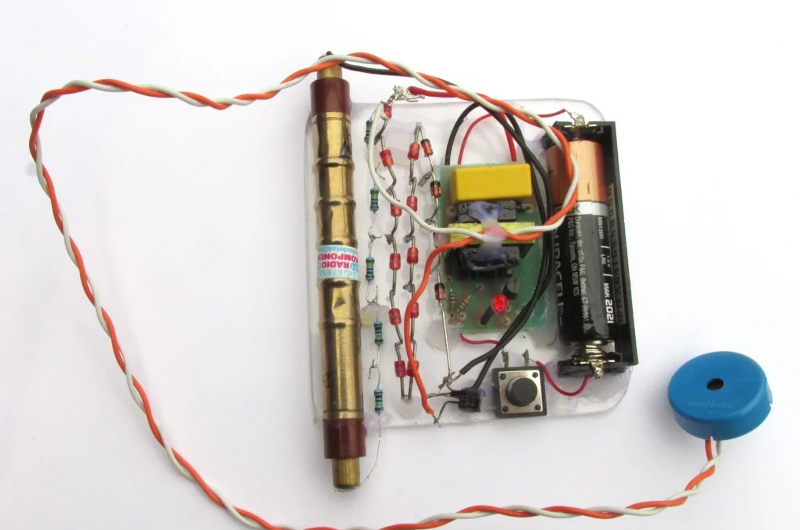With all the focus on biological problems, we might forget that sometimes it’s handy to know about radiation hazards, too. [Ryan Harrington] shows us how to make a Geiger counter with very few parts, and you can see the results in the video below.
The glut of surplus Russian tubes has made this a common project, but we were amused to see the main part of the high-voltage supply was gutted from a cheap electronic flyswatter sourced from Harbor Freight. Even without a coupon, it only costs about $4.
There’s also a stack of zener diodes, a transistor, and some resistors. A battery, a piezo speaker, and a switch round out the bill of materials. Even then, the switch was upcycled from the flyswatter, so there’s not much to buy.
We see these flyswatters on deep sale sometimes, so maybe next time we do we’ll stock up. You could probably use the high voltage module for other projects, too. The module puts out enough voltage that it needs 400V worth of zener diodes to clamp it. [Ryan] used four 100V zeners.
The transistor causes the speaker to click. Apparently you can omit it, but the clicking becomes much harder to hear. Even with no radioactive material around, you’ll hear clicks occasionally from background radiation. But if you get the device near a smoke detector or a lantern mantle, you should hear a lot more clicks.
This reminded us of another cheap build with a camera flash. Want something more complex? Try this one.















Truly shocking construction technique!
Is that one of your current jokes?
“But if you get the device near a smoke detector or a lantern mantle, you should hear a lot more clicks.”
Smoke detectors use Americium-241 which undergoes alpha decay. You’ll have a hard time picking that up with this tube… If you pick up anything at all, it would be from secondary decay.
Wikipedia: “Americium-241 decays mainly via alpha decay, with a weak gamma ray byproduct.”
The gamma rays are detectable with closed smoke detector. It’s not a lot, but it is detectable.
Geiger counters always had few parts. Take a look ar Rufus P. Turner’s hobbyist handbook from about 1957. A geiger tube, a B+ battery, and I guess some sort of amplifier.
Here the simplicity is scrounging a board to generate the HV instead of a battery.
There were replacements for geiger tubes. Popular Electronics in the late seventies or early eighties had a project, I forget the details, but the sensor was solid state.
The Farm manufactured a radiation monitor, around that time, I assume no geiger tube but not certain.
Why is there no resistor in series, with the 14x 33v Zener diodes, to limit the current through the diodes ?
Is that because the flyswatter high voltage source can not provide much current, and any load at all will drag the voltage down. And you are saving the cost of an unnecessary resistor.
Oh and how long will the piezo speaker last being zapped with nearly 1200v, or am missing something ?
Is it really “Geiger counter”? This device does not count anything, it is just radiation detector.
You can manually count the clicks or write a program to count them! Lol
It counts one particle, or high energy photon, as often as it has to.
Those things giving counts per minute readouts are geiger integrators.
I need one but with internet connection to radioactive@home
While the Hackaday article states: “But if you get the device near a smoke detector or a lantern mantle, you should hear a lot more clicks,” the linked Instructables article states: “You can open the smoke detector and take the little button out – it’s usually not very hard.”
A person who has a commercially manufactured smoke detector containing an americium-241 source is exempt from being required to have a radioactive materials license for the smoke detector One should not remove the radioactive source from a smoke detector and use it for other-than-exempt purposes since that may result in the person needing to obtain a radioactive materials license from the NRC or an Agreement State.
Random: In my experience the cheapest reliable source is a thorium doped welding rod offcut (red band)
If you ask nicely any welder should be happy to throw a few in your general direction.
just say that its for a Tesla Coil :-)
Its completely safe as long as you put it in a plastic baggie with the ends heatshrunk so as not to damage the
bag.